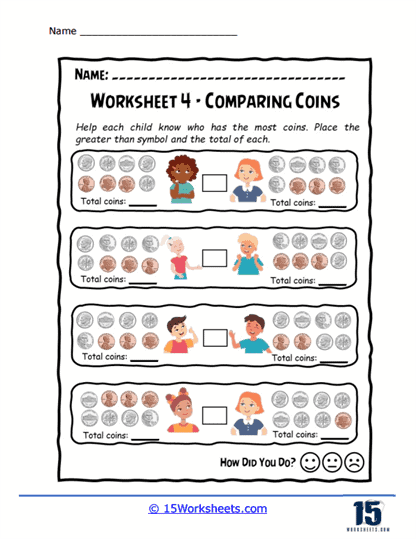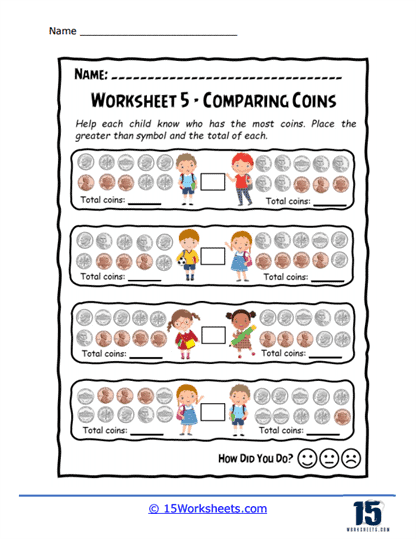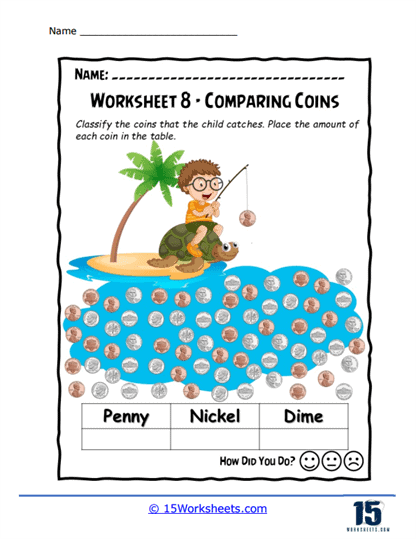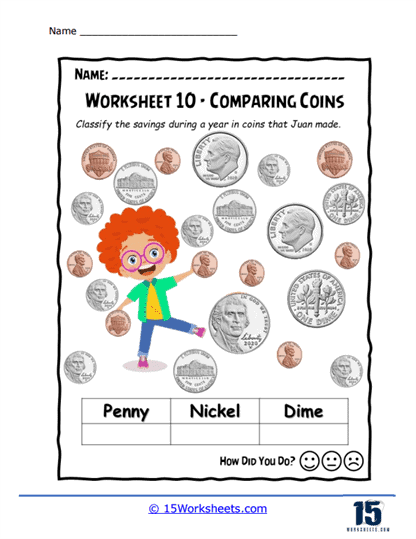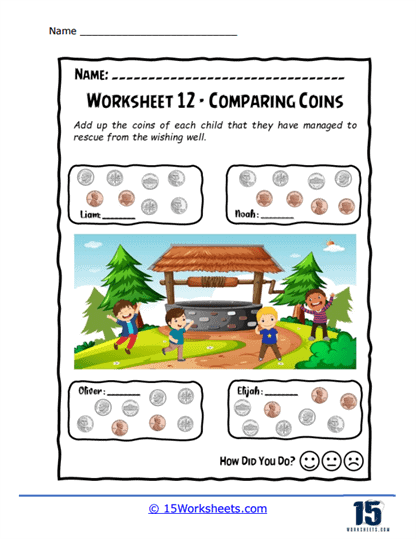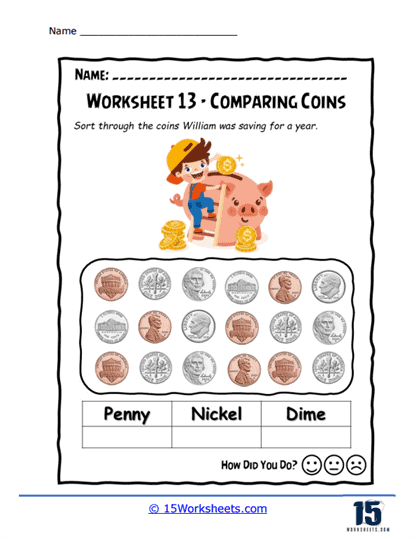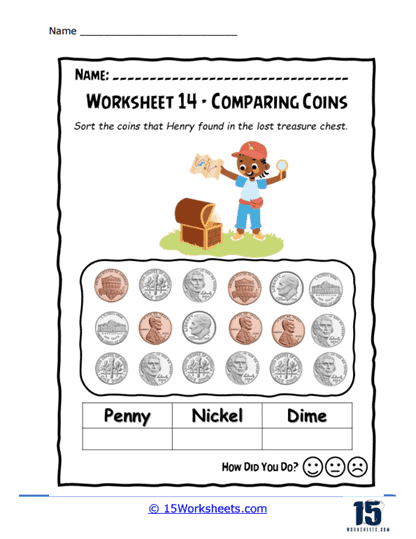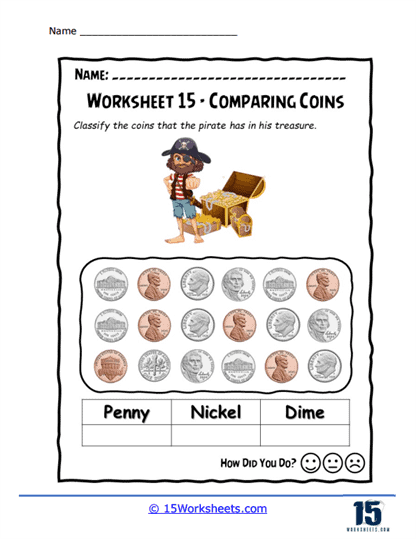Comparing Coins Worksheets
About These 15 Worksheets
These worksheets were designed to help students learn the values of different coins and develop the ability to compare these values. Such worksheets are integral in math curricula, especially for young learners who are beginning to understand money and its usage in everyday life. These worksheets not only teach the basics of currency but also sharpen mathematical skills through a variety of comparative exercises.
Types of Exercises
Direct Comparison – Students are presented with two sets of coins and asked to determine which set has a greater or lesser value, or if both sets are equal. This task involves counting and comparing sums directly. Using symbols (> , < , =), students compare the values of two groups of coins. This reinforces the concept of inequality and equality in a financial context.
Matching to Prices – These exercises show items with price tags, and students must select the set of coins that match the price exactly. This not only teaches comparison but also enhances the understanding of equivalent values.
Ordering by Value – Worksheets may ask students to order multiple sets of coins from the least to the greatest value or vice versa, which requires detailed comparison and recognition of the coins’ worth.
Using Number Lines – Some worksheets incorporate a number line where students place coin values on it, helping them visualize the relative position of each amount in comparison to others.
Fill the Piggy Bank – Exercises where students have to choose coins that add up to the total amount a piggy bank can hold, comparing different combinations of coins that can achieve that total. Involving a narrative context, these problems ask students to solve real-world scenarios that require comparing coin values, such as determining if they have enough money to buy certain items.
Coin Exchange – Students are asked to find different ways to exchange a set of coins for another set with the same value, fostering an understanding of how different combinations can be equivalent. Worksheets might present incorrect comparisons and ask students to identify and correct them, sharpening their analytical skills.
Estimation – These activities encourage students to estimate the value of a large group of coins, which is a practical skill for quick calculations. Here, students choose the correct value from a list of options after comparing sets of coins, offering a quick assessment of their comparison skills.
The Benefits of These Worksheets
Practicing with comparing coins worksheets significantly enhances a student’s understanding of mathematics and financial concepts in a multitude of ways. Firstly, it builds numeracy skills by engaging students in regular exercises that involve comparing the values of coins, thereby solidifying their grasp on basic addition and subtraction. These are foundational skills that serve as building blocks for all future mathematical learning endeavors. Moreover, such practice develops financial awareness among students by providing them with hands-on experience in handling money and understanding its value, which is indispensable for navigating everyday financial transactions.
The process of comparing coins also fosters critical thinking skills. As students assess the relative value of different sets of coins, they engage in analytical reasoning and deduction, exercising vital cognitive processes that are beneficial beyond the classroom. Furthermore, this practice aids in teaching decision-making skills, where students learn to make choices based on quantitative reasoning, such as determining whether they have sufficient coins for a purchase.
This skill also enhances problem-solving abilities, especially when students encounter word problems or scenarios that require choosing between different values of coins. They learn to apply problem-solving strategies effectively to reach a conclusion. The inclusion of real-world contexts in worksheets demonstrates the practical application of math, showing students that math is not merely an abstract concept but a useful tool in everyday financial dealings.
Activities that involve estimation with coins teach students to make quick and reasonable guesses about values, a skill that proves invaluable in daily money management. Such exercises also cultivate a keen attention to detail as students must closely examine each coin’s worth, a critical skill in financial transactions. As students become more proficient in comparing coin values, their confidence in managing money increases, which in turn reduces anxiety about financial decisions.
Preparing students for advanced financial concepts starts with a strong understanding of the value of money and the ability to compare it effectively. This foundation paves the way for learning more complex economic principles, such as budgeting and saving. Moreover, comparing coins worksheets support cognitive development by enhancing memory skills and the ability to recognize and remember the value of different coins.
They also teach students about equivalency through the exchange of different coins of equal value, a fundamental concept in mathematics and a crucial aspect of financial literacy. Through these diverse benefits, practicing with comparing coins worksheets not only strengthens a student’s mathematical skills but also prepares them for practical financial decision-making in the real world.




